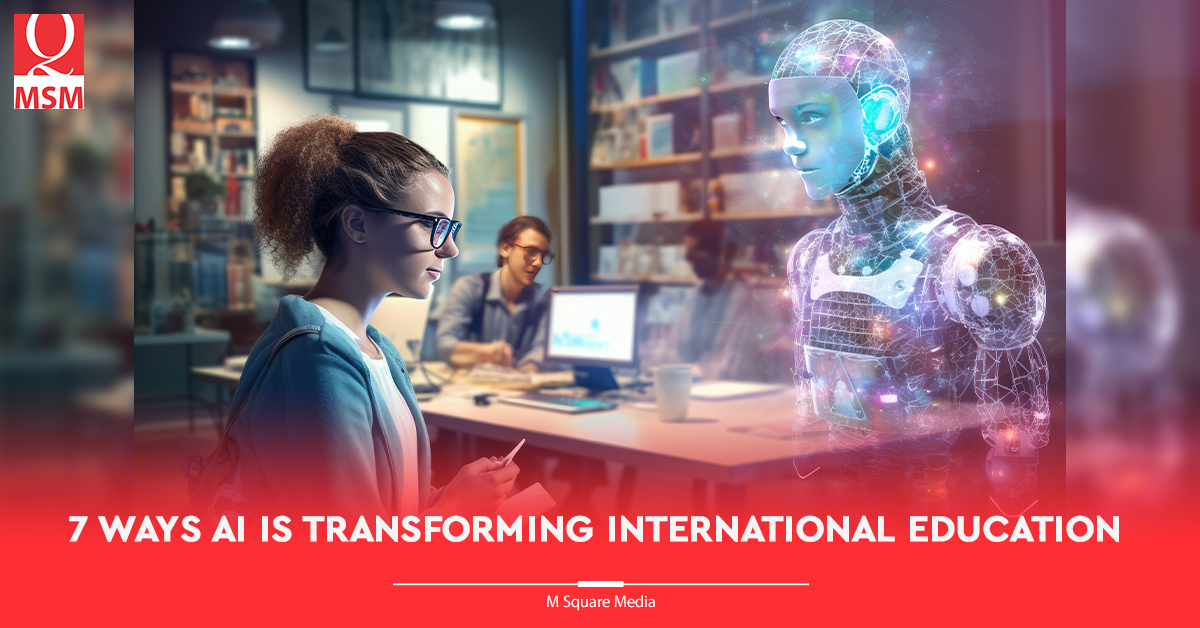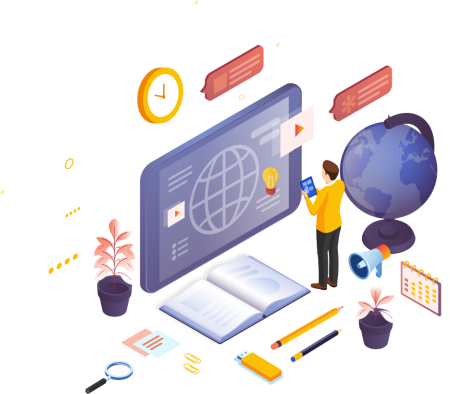A global revolution led by artificial intelligence (AI) is fundamentally reshaping the landscape of international education. AI offers a variety of game-changing technologies that improve learning, expedite administrative procedures, and promote intercultural understanding as education systems strive to adapt and innovate.
Here are seven significant ways in which artificial intelligence is reshaping international education.
1. Customized Learning Experiences
The drive to personalize educational experiences is being led by AI. AI-powered platforms give tailored content and instructional courses by analyzing students’ unique learning preferences and actions.
Two of the most valuable AI tools for international students are Gradescope AI and IVY Chatbot. Gradescope AI offers students important information on student loans, grants, tuition payments, and scholarships, among other things. Simultaneously, IVY Chatbot enables students to assess each other and provide feedback, tasks that are typically time-consuming without AI technology.
This adaptability improves understanding and retention, ensuring that instruction aligns perfectly with individual needs. Students are empowered to engage with course materials following their unique learning styles through real-time feedback and meticulously crafted resources.
2.Dynamic Adaptive Learning Systems
Innovative adaptive learning systems, powered by AI and data analytics, are essential to international education. These systems gather vital information on how students engage with their course materials and perform in examinations. Utilizing this information, adaptive learning systems create content and learning pathways that are tailored to each student. This tailored approach accommodates a spectrum of backgrounds, skill levels, and learning paces, especially valuable in the realm of international education, promoting equitable educational experiences.
3.Language Proficiency and Translation
By seamlessly integrating with language learning and translation technologies, AI is effectively dismantling language barriers in the context of international education. Through AI-powered translation tools, students can access lectures and course materials in their native languages. Furthermore, interactive language learning programs provide practical exercises that expedite language acquisition for international students. This promotes inclusivity and increases educational opportunities irrespective of linguistic diversity.
4.Virtual Learning Environments

Virtual classrooms, empowered by AI, are becoming the foundation of international education. By combining video conferencing, collaborative tools, and automated attendance tracking, these technologies effectively support remote learning experiences. As a result, real-time interactions between students and educators nurture cross-cultural relationships and facilitate global learning. Students from across the globe now have the opportunity to pursue their education without being limited by their location.
5.Comprehensive Student Support and Engagement
AI-driven chatbots offer students round-the-clock assistance with administrative activities, answering questions, providing information, and resolving issues promptly. This increases student involvement and ensures that queries are addressed in a timely manner. Furthermore, by identifying students at risk of falling behind or dropping out and analyzing attendance trends, performance metrics, and assignments, AI broadens its impact even further. Prompt interventions can significantly impact student success rates when paired with the right kind of support.
6.Efficient Evaluation and Assessment
A variety of evaluation formats, such as multiple-choice questions, true/false questions, and even some short-answer questions, have been transformed by AI-powered tools. These technologies quickly examine and assess students’ responses, providing immediate feedback and saving educators important time. Notably, AI-driven grading eliminates the possibility of prejudice resulting from human graders by ensuring fair and consistent judgment. This improvement simplifies the assessment process, benefiting both students and educators.
7.Strategic Predictive Analytics for Student Success
Student retention techniques are greatly improved by AI’s data processing. AI can forecast student performance and identify those at risk of dropping out by carefully examining historical data. To increase retention rates, early intervention strategies that are tailored to each student’s requirements might be used. By analyzing global educational trends, demographic shifts, and labor market demands, AI also empowers educational institutions to align their offerings with current and future needs. With this knowledge, schools can stay ahead of the curve and ensure their educational initiatives are in line with changing demands.
Unquestionably, AI is leading the way in transforming global education through a variety of innovative approaches. The way we approach and engage with education on a global scale is changing as a result of AI, from personalized learning experiences to global virtual classrooms. Additionally, AI helps institutions in making data-driven decisions, predicting and supporting student performance, and promoting equitable access to high-quality education. AI stands as a light of innovation, ushering in a new era of global education as the educational landscape continues to evolve.
Sources:
- iSchoolConnect. (2023). The role of Artificial Intelligence in international education. iSchoolConnect. Retrieved from https://ischoolconnect.com/blog/the-role-of-artificial-intelligence-in-international-education/
- McFarland, A. (2023). Unite.AI. Retrieved from https://www.unite.ai/10-best-ai-tools-for-education/




